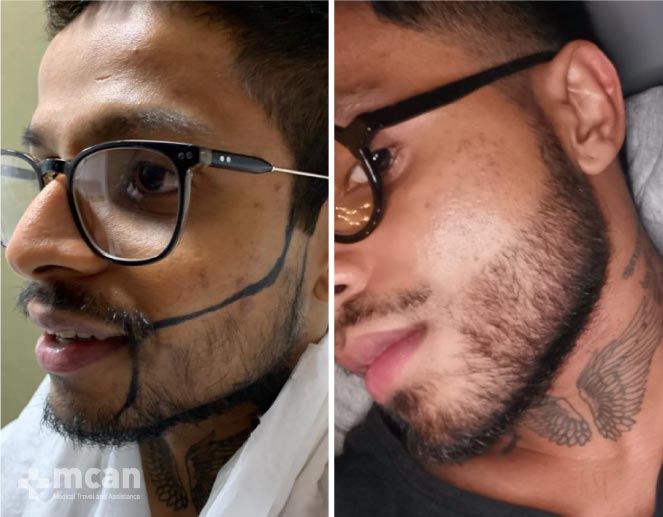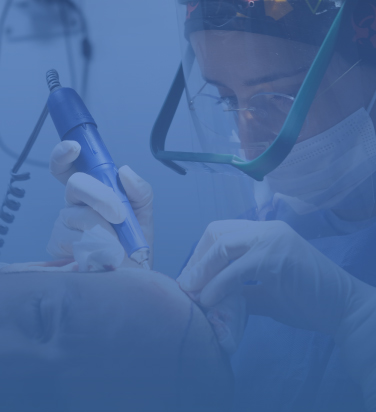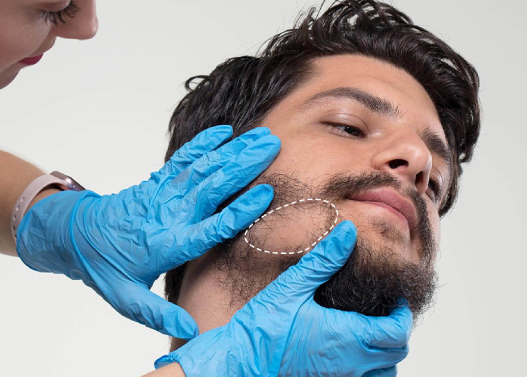Preparing the Treatment Areas
Before the procedure begins, both the donor area (usually the back of the scalp) and the beard area are prepared. The surgeon marks the desired beard shape and discusses the final design with the patient.
Local Anesthesia
Local anesthetic is applied to numb both the donor and recipient areas, ensuring a comfortable and pain-free experience during the transplant.
Extracting Healthy Hair Follicles
Using a specialized technique, strong, healthy hair follicles are extracted individually from the donor area. These follicles are carefully selected to match the thickness and texture of natural beard hair.
Creating Beard Implantation Areas
Tiny channels are opened in the beard or moustache area, following the natural angle and growth direction of facial hair. The surgeon ensures balanced density and a natural distribution for a realistic outcome.
Implanting the Hair Follicles
The extracted follicles are gently implanted into the beard area, aligning with the planned design to achieve fullness and symmetry.
Post-Procedure Care
Once implantation is complete, the surgeon provides initial aftercare instructions, and the treated areas are cleaned and checked for proper follicle placement.
Aftercare and Recovery Support
Patients receive a customized aftercare plan, including washing techniques, medication guidance, and lifestyle recommendations. Regular follow-ups help track growth progress and beard development over the next few months.


































